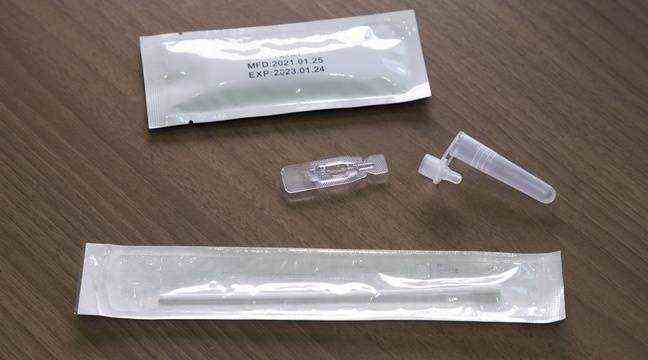A self-test to detect Covid-19. – SYSPEO / SIPA
This is a decision that should make it possible to significantly increase the ease and capacity of screening for Covid-19, especially in schools. The High Authority for Health (HAS) on Monday authorized antigenic tests and self-tests, with rapid results, for children under 15 years old.
These “antigenic tests on a nasal sample have the advantage of combining rapidity of results and possible repeated use in a larger public”, underlines the HAS. Until now, these tests were reserved for those over 15 years old. But “in the light of recent modeling work”, the authority concluded “that these tests can be a screening tool for children under 15 years old” and that they are “relevant for breaking the chains of contamination, in particular in school “.
Their main advantages: a result in 15 to 30 minutes without having to resort to a laboratory and they are less invasive than nasopharyngeal swabs because the swab is inserted less deeply into the nose. As nasal antigen tests can be used in adults and children, “the HAS considers that a wider use of their self-test form is of interest in schools”. It recommends that these tests be “carried out at least once a week according to the sampling methods most suited to the age, the capacities of the child and the local context”.
Necessary supervision for the primary
Thus “students, high school and college students can carry out the self-test independently (after a first realization under the supervision of a competent adult if necessary). For pupils in primary school, the initially supervised self-sampling is also possible, but it is preferable that the test be done by parents or trained staff. For children in nursery school, the sampling and the test must be carried out by these same actors, ”adds the HAS.
As for the rapid saliva tests, that is to say the saliva self-tests, the authority repeats that the available data, “very heterogeneous, do not allow at this stage to show” that they “have sufficient efficacy to be able to be used. recommended ”.

